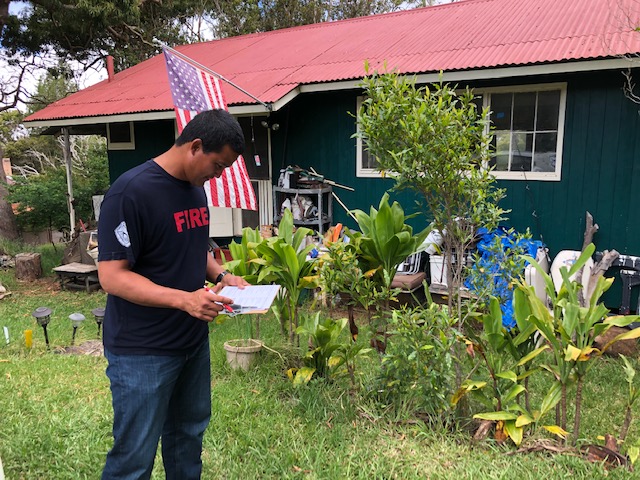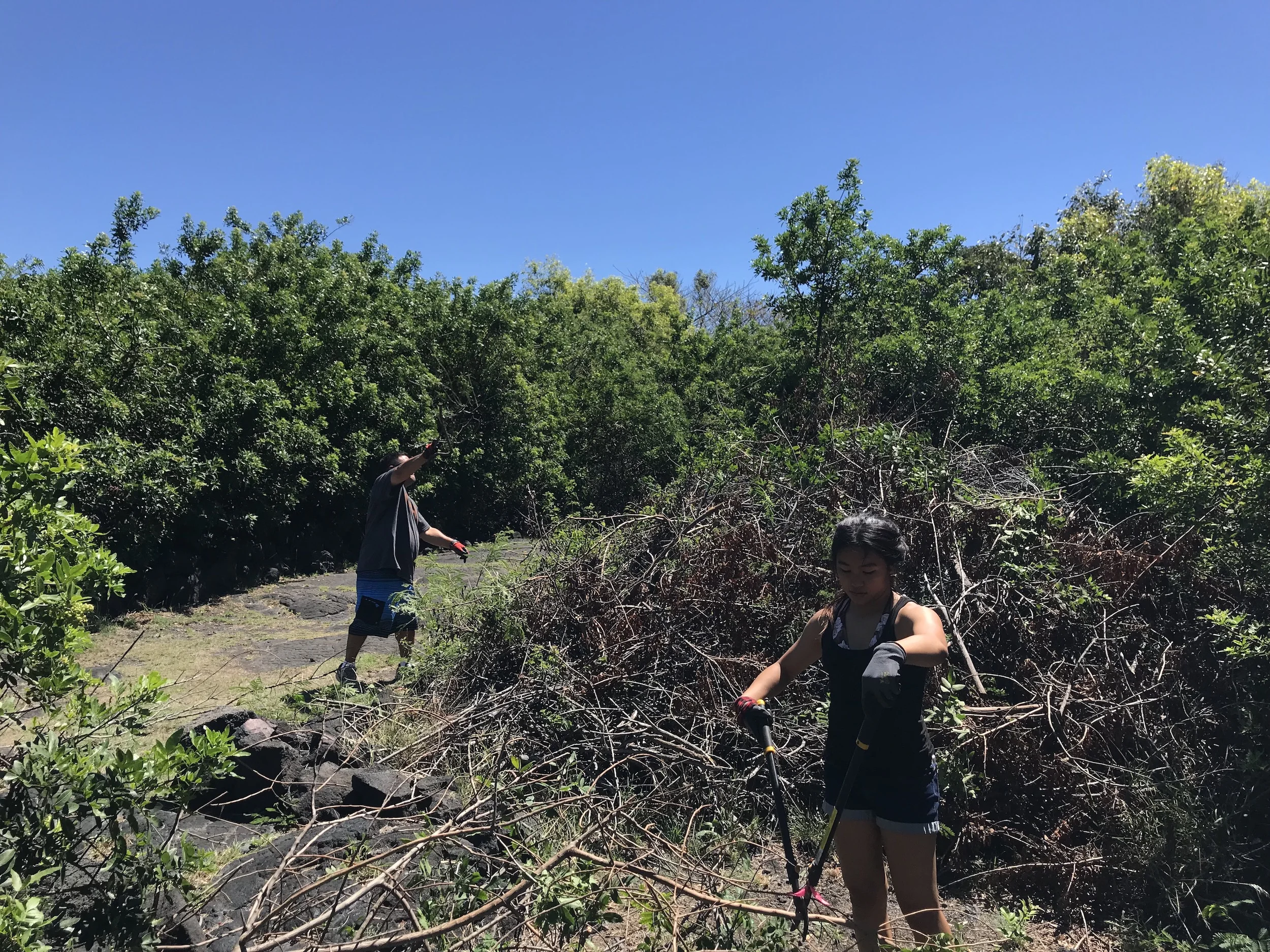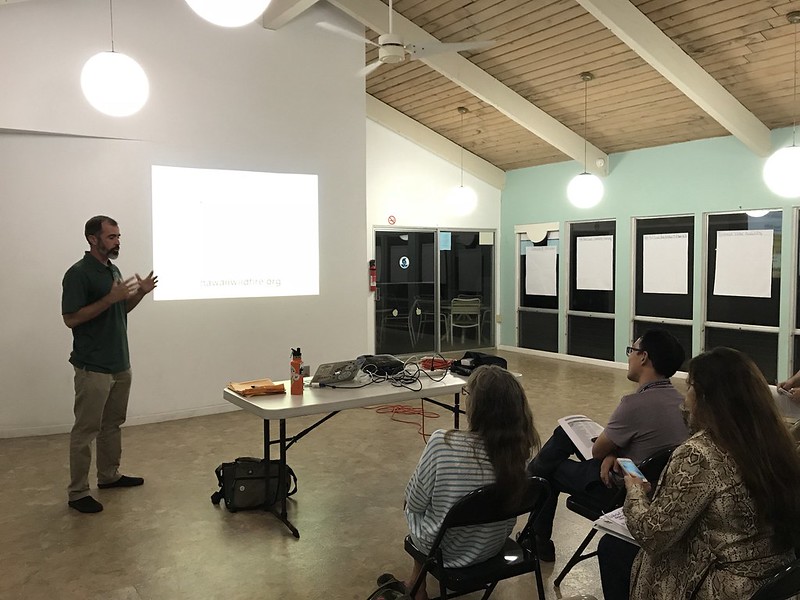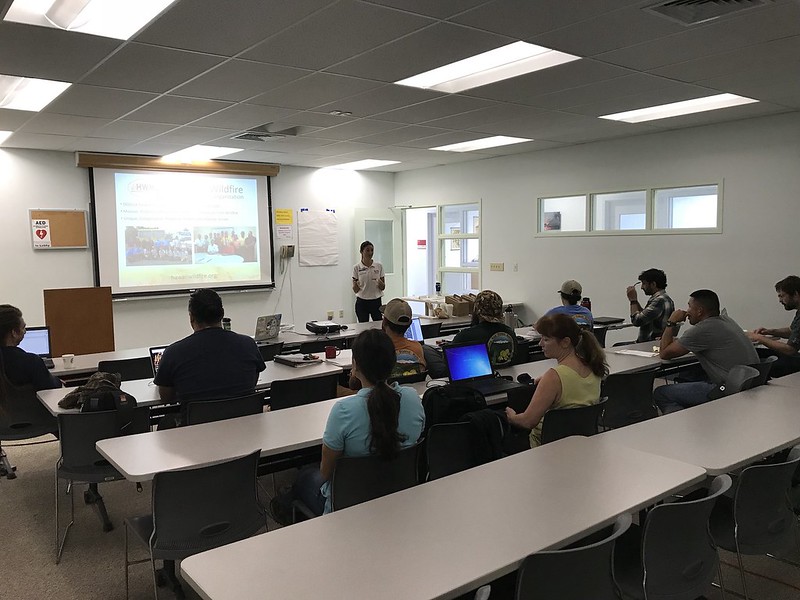Earlier this week, Hawaiʻi Wildfire Management Organization traveled to West Kauaʻi to present the Ready Set Go! framework, and even practice those concepts in the field at the beautiful Kōkeʻe State Park.
HWMO Executive Director Elizabeth teaches what to look out for while assessing Home Ignition Zones.
It was great to hear from members of the community in Waimea the night before, and Pablo Beimler (HWMOʻs Community Outreach Coordinator) did a great job presenting the Ready Set Go! (RSG) framework. The RSG! program was devised by the International Association of Fire Chiefs (IAFC), and is a very useful tool, presenting the best practices for preventing unintended fires from happening in the first place, and then if they do happen, what steps to take and WHEN to take them. We were joined by representatives of the DLNR Division of Forestry and Wildlife (DOFAW), and went over some of the actions that Waimea residents could take to prevent destructive wildfires.
The Ready Set Go! workshop participants.
The RSG! presentation was filled with information on how to reduce the risk of certain wildfire fuels surrounding your home, how to lessen the chances of wildfire spread from surrounding vegetation to your structure, as well as how to protect structures themselves from igniting, should the embers or flames from a fire come into contact. We all walked away with a little more knowledge on how protect ourselves, our homes, and our livelihoods from fire.
After Pabloʻs presentation, we learned a significant amount about the obstacles certain community members are up against while taking measures to reduce wildfire hazards around their properties and homes. The community members, agency representatives, and HWMO had time to converse and share ideas on the next steps that could be taken to reduce fire risk.
The next morning, we met and went through a Home Ignition Zone (HIZ) score card at Kōkeʻe state park, where one cabin resident allowed us to assess the fire risk of built structures at his cabin. It was beneficial to put the knowledge we had gleamed the night before into direct use, and understand what phrases like ladder fuels, fire-prone brush, and defensible spaces meant while applying it to a real-life structure. Each member of that workshop left with a greater understanding of how fire can travel faster uphill, the risks of storing wood underneath your house that could easily act as kindling, and how tree branches growing right next to the eaves of your roof could ignite your structure. It was a beautiful day outside in the precious native forest of Kōkeʻe.
We would like to thank the community members that came out to this event to learn how to be more Firewise, as well as the member of DOFAW that helped put on this educational event. DOFAW representatives Mapuana, Ceanne, Kawika, and Mike all helped us put on the successful event. We look forward to working with the West Kauaʻi communities again in the future, and hope to see the Ready Set Go! program grow there so that the people in those communities are as prepared as they can be in the event of a wildfire. An ounce of prevention is worth more than a pound of suppression!
Mahalo everyone for making this event successful!




















































































